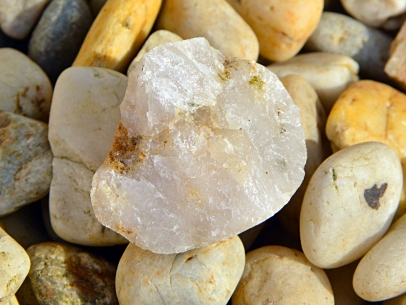Minerals
With a little bit of persistence and patience, it is possible to find interesting, beautiful and even some rare minerals on the Goričko area.
Olivine is a magnesium and iron silicate mineral with chemical composition (Mg,Fe)S2xSiO4. It can be found in the form of nodules in abandoned quarries of basalt tuff at Grad. The rock basalt tuff is of volcanic origin; it was formed in the great depths and high-pressure environment where magnesium crystals of olivine are cooling from the magma. The nodules can have hundreds of 1-2 mm large crystals, which range in colour from yellow to olive-green. The olive green colour comes from the traces of nickel element.
In quarries of the basalt tuff we can also find the calcite, which comes in the form of geodes – small chambers inside rocks. These crystals can be up to 0.5 cm in size. Even bigger ones, up to 1 cm big single crystals, individually called “canine tooth”, often appear together with phillipsite, which is a relatively common mineral. Much more rare are appearances of augite from the pyroxene group of minerals.
Pyrite is one of the more common sulphide minerals and can be found in the shales in the quarry of Sotina Hill. This mineral comes in the form of a beautifully shaped 0.5 cm large cubes, in metallic gold colour, due to which it got nicknamed “fools gold”. It is composed of iron and sulphur. In this quarry we can also find, in the form of small crystals, minerals dolomite and ankerite. They present as growth on base rocks.
Probably the most common silica mineral in Goričko sediments is flint. Because of impurities it comes in different colours. It is known for its hardness, which can make bruises on glass surface. In Goričko sediments we can found also mica, which is easy to spot due to its glittering characteristic.









